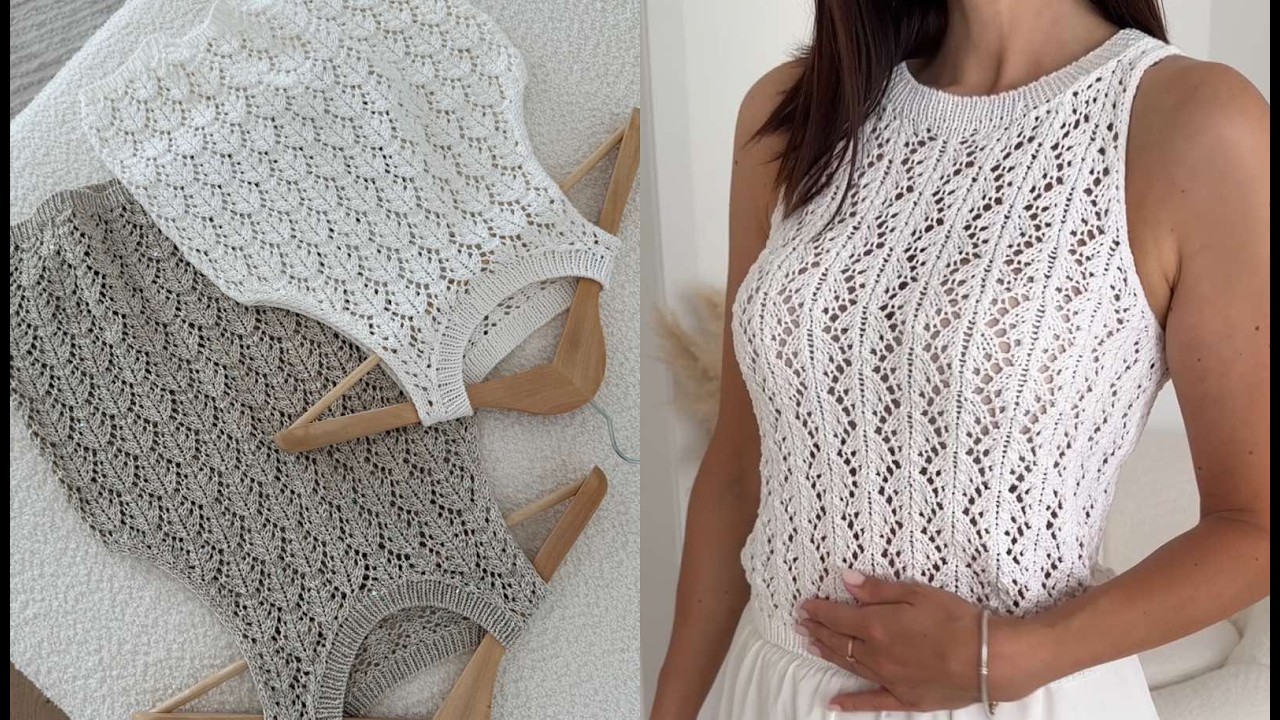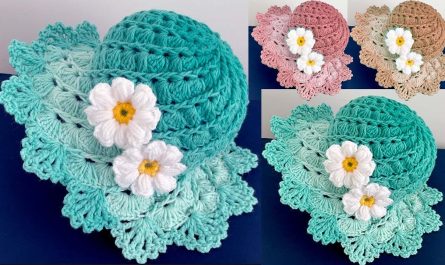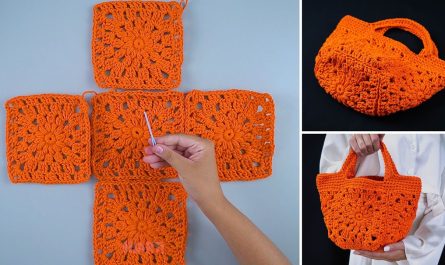Creating a delicate openwork knitted top requires attention to detail, lace knitting techniques, and following a specific pattern (chart or written instructions). Below is a detailed step-by-step guide on how to knit a delicate openwork top, assuming you already have a lace pattern in mind (or a chart).
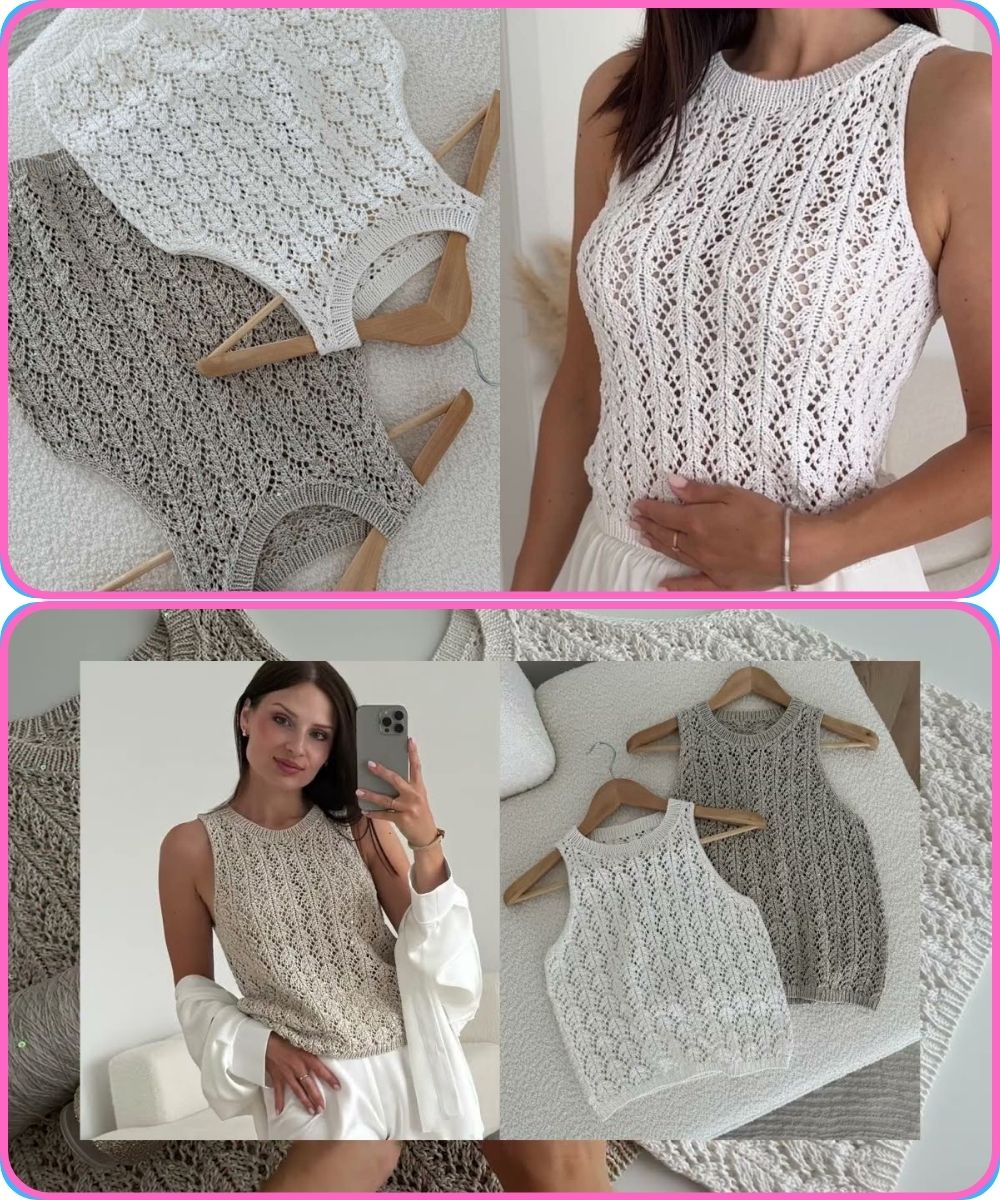
How to Make a Delicate Openwork Knitted Top (Step-by-Step Guide)
Materials You’ll Need:
-
Yarn: Choose a lightweight yarn like cotton, bamboo, silk, or linen blends (fingering or sport weight is best for delicate work).
-
Knitting needles: Usually 2.5mm to 4mm (check yarn label + your pattern).
-
Tapestry needle: For weaving in ends.
-
Stitch markers: To mark repeats or important points.
-
Blocking tools: Blocking mats, pins, or wires.
-
Pattern/chart: The openwork (lace) design you’ll follow.
Step 1: Choose or Understand the Pattern
You can either:
-
Use a ready-made pattern (from a knitting magazine, Ravelry, etc.)
-
Or adapt a lace chart to a basic top construction (e.g., tank top or tee).
Most lace patterns use symbols and charts. Understand key lace stitches:
| Symbol | Stitch |
|---|---|
| “yo” | Yarn Over (adds a stitch) |
| “k2tog” | Knit 2 Together (right-leaning decrease) |
| “ssk” | Slip, Slip, Knit (left-leaning decrease) |
| “psso” | Pass Slipped Stitch Over |
| “-” or empty | Knit |
| “ | ” or dot |
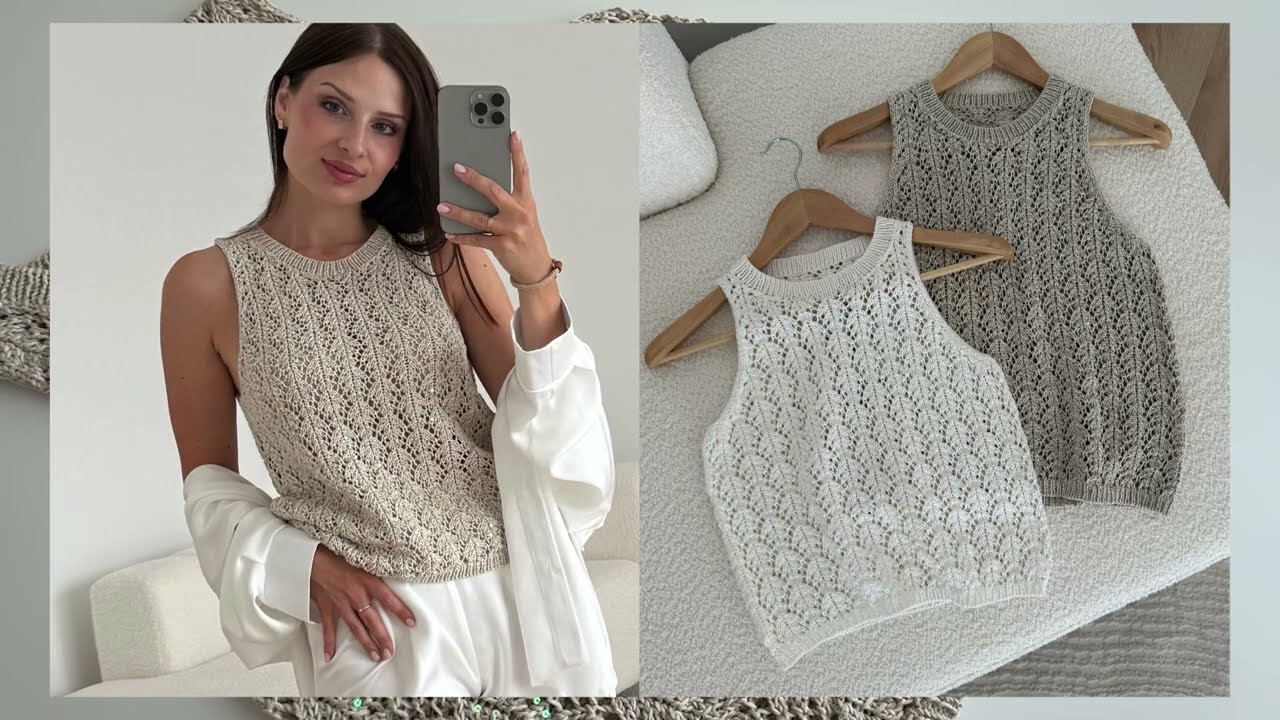
✍️ Step 2: Take Your Measurements
Measure:
-
Bust
-
Length (shoulder to hem)
-
Armhole depth
-
Shoulder width
These will help adjust the number of stitches and repeats.
Step 3: Gauge Swatch
-
Knit a swatch in the lace pattern (minimum 4×4 inches).
-
Block it as you would the finished piece.
-
Measure how many stitches and rows per 10cm / 4″.
Why? Lace expands after blocking. You MUST swatch to make sure your top won’t be too large or too small.
Step 4: Choose Construction Method
You can knit the top:
-
Flat in two pieces (front and back) and seam
-
In the round, bottom-up or top-down (seamless)
-
With raglan sleeves or sleeveless (easier)
For beginners or first-timers, knitting flat is easiest.
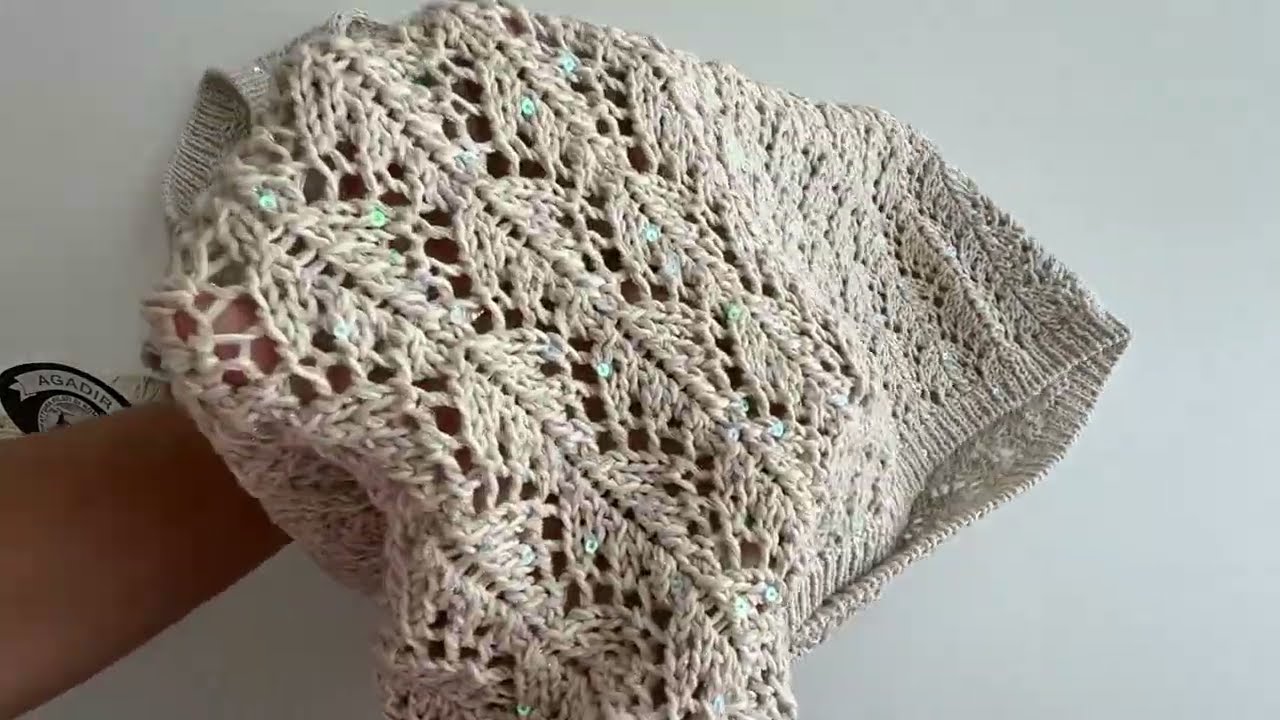
Step 5: Cast On and Begin the Back Panel
-
Use a stretchy cast-on (e.g., long tail or knitted cast-on).
-
Cast on stitches according to your gauge and measurement.
-
Work in border pattern (garter or rib) for 4–6 rows to prevent curling.
-
Begin working the lace chart in repeats across the row.
Tip: Place stitch markers between each lace repeat to avoid getting lost.
Step 6: Knit the Front Panel (Repeat + Neck Shaping)
-
Knit same as back up to armholes.
-
At the bust/neckline level, start shaping the neck (scoop or V-neck):
-
For scoop neck: bind off center stitches and work sides separately.
-
For V-neck: decrease 1 stitch at neck edge every 2nd row.
-
You can keep the lace pattern or switch to stockinette at the bust, depending on design.
Step 7: Block the Pieces
Before seaming:
-
Soak the panels in lukewarm water with mild soap.
-
Gently squeeze water out (don’t wring).
-
Pin the pieces to measurements on a blocking mat.
-
Let dry completely.
This is essential for lace – it opens the pattern and sets the shape.
Step 8: Seaming
-
Seam shoulders and sides using mattress stitch or invisible seaming.
-
Make sure lace motifs align neatly across seams.
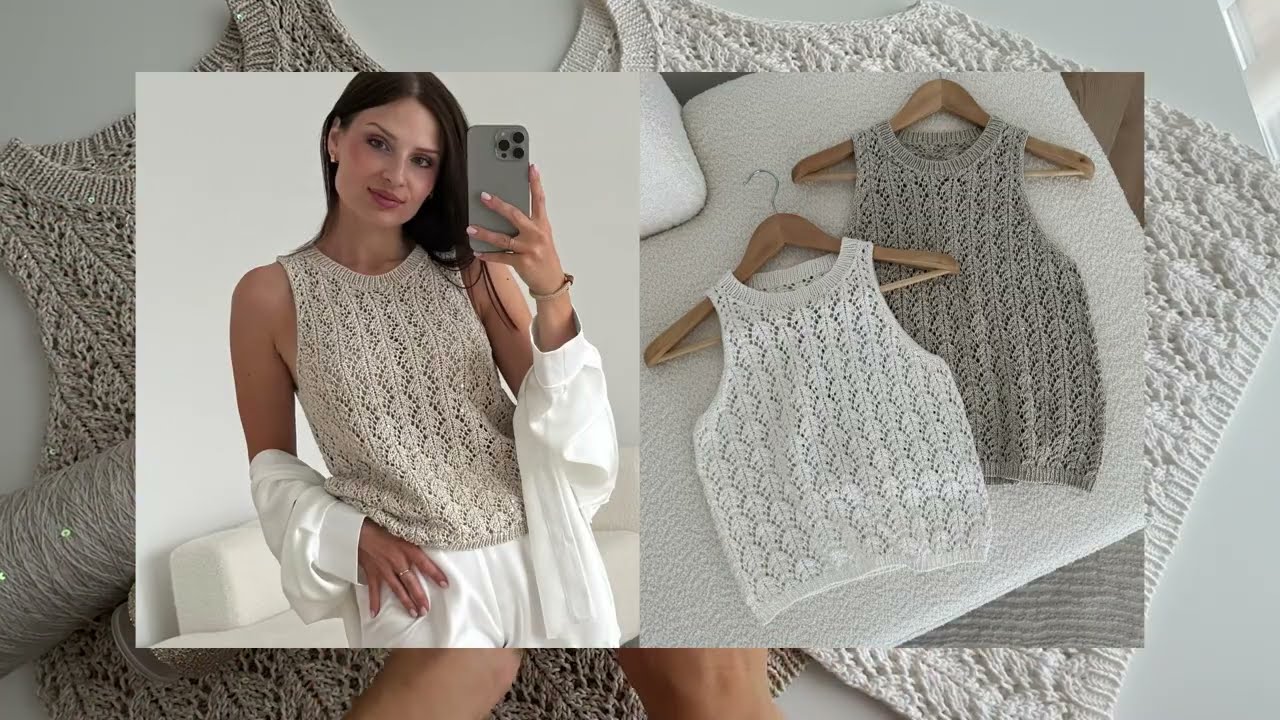
✨ Optional: Sleeves or Edging
-
You can add:
-
Cap sleeves, using picked-up stitches
-
Crochet edging around neckline or armholes
-
I-cord edging for a neat finish
-
Step 9: Final Blocking
Once the entire top is assembled:
-
Lightly block again to smooth seams and shape the garment.
-
Lay flat to dry.
Tips for Success:
-
Keep your tension even – lace can look messy if tension varies.
-
Use lifelines (thread through a row periodically) to avoid unraveling too much if you make a mistake.
-
Use chart markers or a magnetic board to follow lace patterns row by row.
-
Choose patterns with repeats that match your bust width, or adjust accordingly.
Simple Openwork Stitch Patterns (Examples)
Here are a few beginner-friendly lace motifs you can use:
1. Feather and Fan:
-
Rows repeat every 4 or 6 rows.
-
Wave-like, very stretchy, good for hems.
2. Diamond Lace:
-
Classic lace motif, great for full panel.
3. Mesh Lace:
-
Simple alternating yo/k2tog — airy and fast.
Would You Like a Specific Pattern?
If you have a photo or link to a specific top, or want a custom openwork pattern designed for your size, I can generate one for you with a chart and written instructions.
Let me know:
-
Your bust measurement
-
Yarn weight and needles
-
Top length
-
Preferred neckline/sleeves
Watch tutorial:
